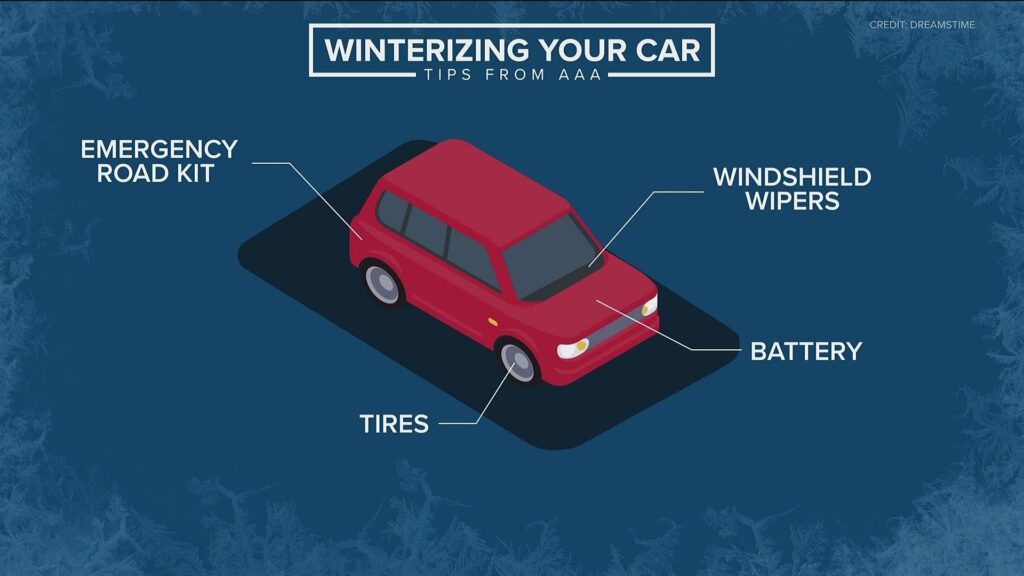The chemical reactions that take place within the battery for it to generate electrical power significantly slow down in cold conditions. In fact, at 5 degrees Fahrenheit, a completely charged lead-acid battery has only half its ampere hour capacity than it does at warmer temperatures. Less power output generated by the battery put together with greater power requirements of the automobile in winter is a recipe for not being able to get your vehicle started on a cold winter morning.

To prevent this, like the rest of the car, the battery has to be winterized. This is also helpful so that come spring, you have a battery in pristine shape despite the toll that cold conditions would have taken on it. In fact, the first place to start winterizing the vehicle is from the battery itself. Listed as follows are some measures that can be adopted to prevent your battery from stalling during the winter months.
Battery Clean-up
The battery is responsible for generating the initial charge and transmitting it to the starter for the engine to kick into life. It is imperative to ensure that the transmission happens optimally so that energy from the battery is utilised with minimal dispersion. In order to do so, it is good practice to ensure that ports and terminals are bereft of corrosion. Battery corrosion typically manifests in form of a crystalline powder or sometimes even as fungal growth.
Corrosion can be dealt with by purchasing commonly available battery cleaners. These are also inexpensive to procure. They usually come with a brush that is used for cleaning the inaccessible areas on the inside of the battery clamps that are tough to reach. Also provided is a terminal cleaner that can be placed over the posts of the battery to deal with corrosion. A word of caution: corrosion can cause harm to your skin upon coming in contact and it is advisable to wash the affected area with soap and water right away.
Battery Charge
A battery that is not fully charged can begin to freeze at temperatures as high as 20 degrees Fahrenheit. If allowed to freeze, the internal damage caused to the battery cannot be fixed and replacement is the only option. Cracks can also develop owing to the freezing and will lead to a mess that will be tough to deal with.
To ensure that the automobile battery is at full charge before the onset of winter months, a car battery charge can be a very handy tool. They are even more useful if the automobile is not used for prolonged periods of time. Another handy device for batteries that is only used seasonally is a battery charger with float functionality. The float mode generates a constant current to maintain the battery voltage without overcharging the battery, which can be very useful for recreational vehicles.
One way to check the charge on your battery is to use a multi-meter. For most automobile batteries, the fully charged battery will give a reading of 12.4 volts or more. However, to be doubly sure, it is best to consult the manual. Another way to assess the charge on the battery without a multi-meter is to see how powerful your headlights currently are. It is a good, but not the most accurate indicator of battery charge.
Opting for the Right Battery
Every vehicle battery has a cranking amps (CA) and a cold cranking amps (CCA) rating. What they both measure is the power that the battery can generate to start the engine. However, the essential difference between the two is that the CCA measures the ability of the battery to function in cold temperatures. It is thus calculated at temperatures as low as zero degrees Fahrenheit while CA is measured only at 32 degrees Fahrenheit.
Since batteries take up significantly more current in winter months to generate the requisite power output, the CCAs become a very relevant metric to consider. If unsure of what battery to use, it is advisable to consult a mechanic for the ideal heavy-duty battery. Equally important it is to keep in mind that cars that operate usually in warm weather have batteries with low CCAs as it is surplus to requirements.
Concluding Remarks
Driving in winter is anyway a tricky experience. By ensuring that your battery is running fine and is in prime condition for the winter onslaught, you have already commenced on the path to handling winter conditions without too much hassle.
Originally posted 2023-11-12 05:57:41.